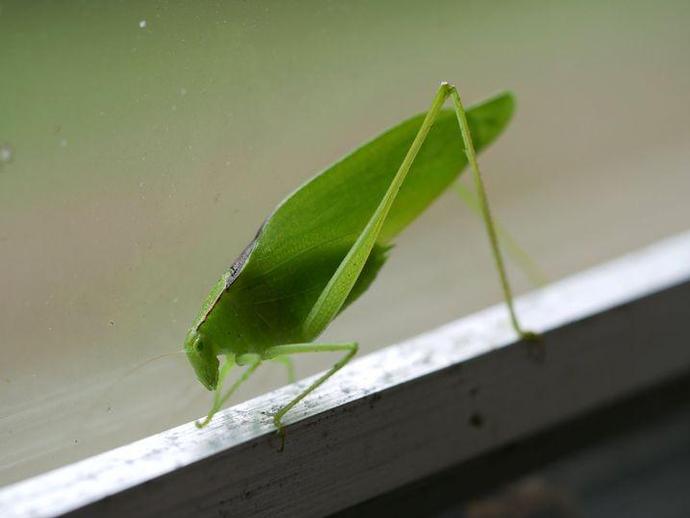August 15, 2021
We're reaching into the archives for today's #BenInNature update presented by our friends at Carter Bank & Trust! The following post was originally published on July 22, 2020.
You may not always see katydids, but on summer evenings, you'll definitely hear them!
This particular katydid is a male Amblycorypha oblongifolia, also known as the oblong-winged katydid. It can be found from the northeastern U.S. into the midwest. They typically hang out in the understory of deciduous forests and in tall weeds and shrubs, and they feed on goldenrod flowers and other related plants. They don't usually damage important agricultural crops.
Since katydids are nocturnal, they rest during the day. When they do, they usually assume a position just like this one, with their head lowered and their abdomen raised. Katydids are leaf mimics, and this posture helps to create the illusion that they're nothing more than a leaf sprouting from a branch (of course, it isn't quite as effective when the katydid is resting on a window).
The most unusual feature of this species of katydid is probably its color variation. While the vast majority of oblong-winged katydids are green, in rare cases, they can be tan, orange, or even pink! It was initially thought that these were seasonal color variations, but in 1916, entomologist Joseph Hancock discovered that the unusual colors are the result of a genetic condition known as erythism (a condition that causes abnormal redness in the fur, plumage, or skin of animals). I've never seen a pink katydid, but I'd love to spot one!
Thank you to VMNH Associate Curator of Invertebrate Zoology Dr. Kal Ivanov for identifying this one for me!
ABOUT #BenInNature
Social distancing can be difficult, but it presents a great opportunity to become reacquainted with nature. In this series of posts, Administrator of Science Ben Williams ventures outdoors to record a snapshot of the unique sights that can be found in the natural world. New updates are posted Monday - Friday, with previous posts highlighted on the weekends. This series of posts is made possible thanks to the support of VMNH Corporate Partner Carter Bank & Trust (www.cbtcares.com).
NATURE PHOTO IDENTIFICATIONS
If you discover something in nature that you would like help identifying, be sure to message us right here on Facebook with a picture (please include location and date of picture) and we'll have our experts help you identify it!

 Hours & Admissions
Hours & Admissions Directions
Directions

